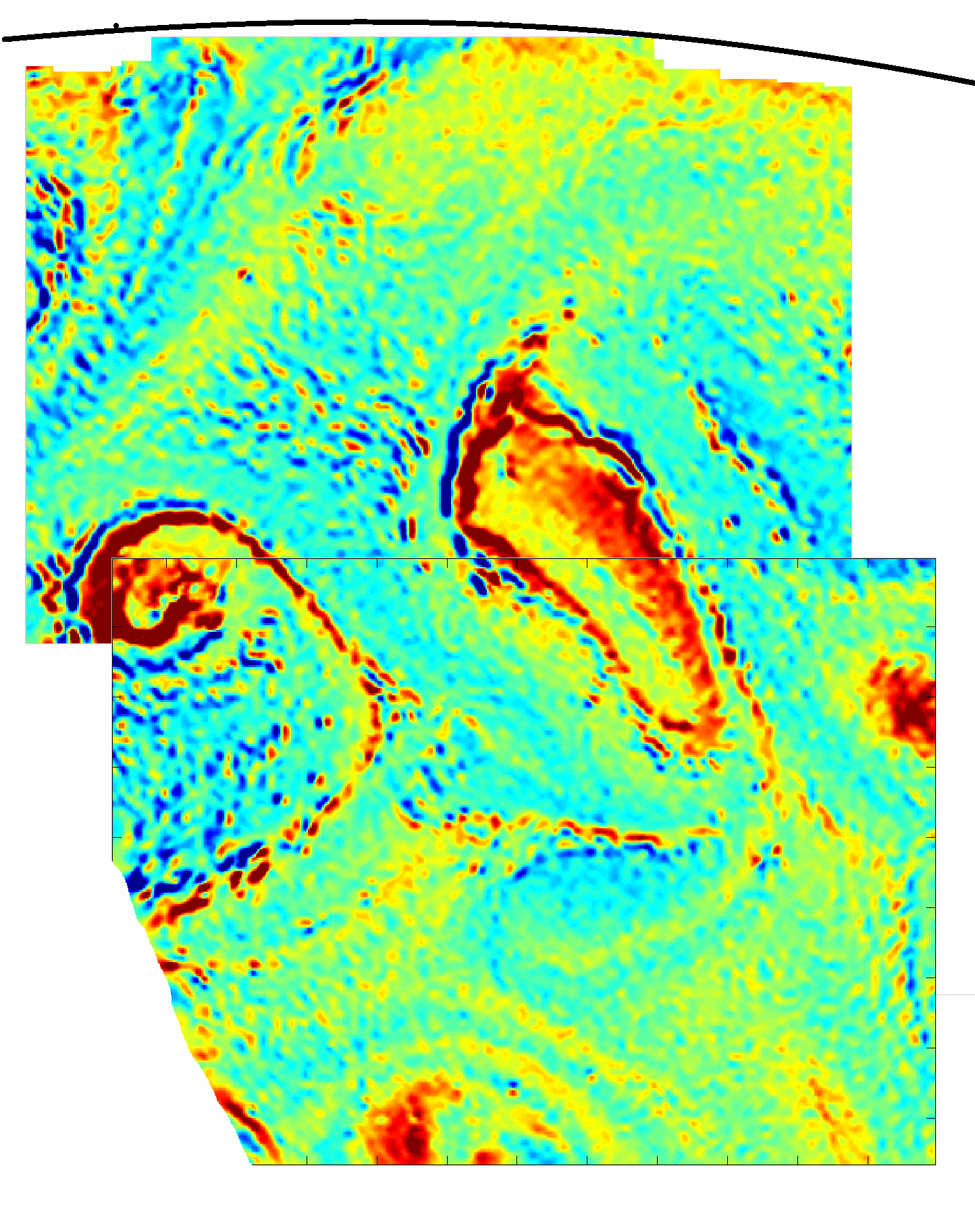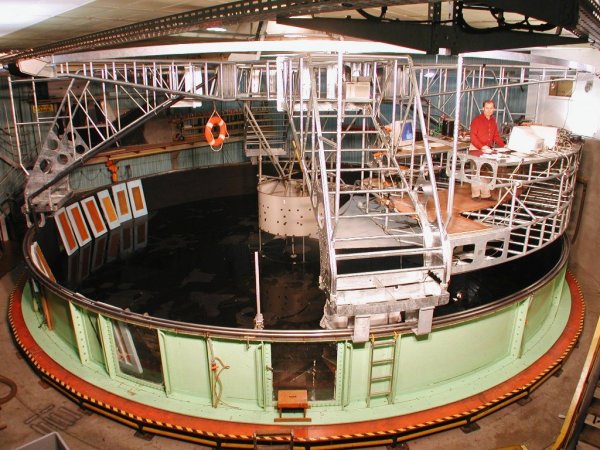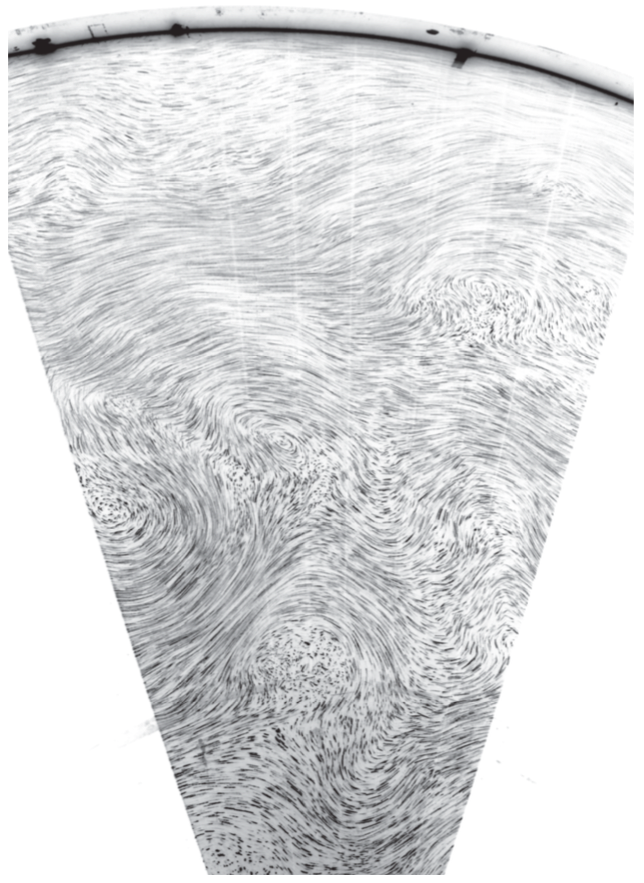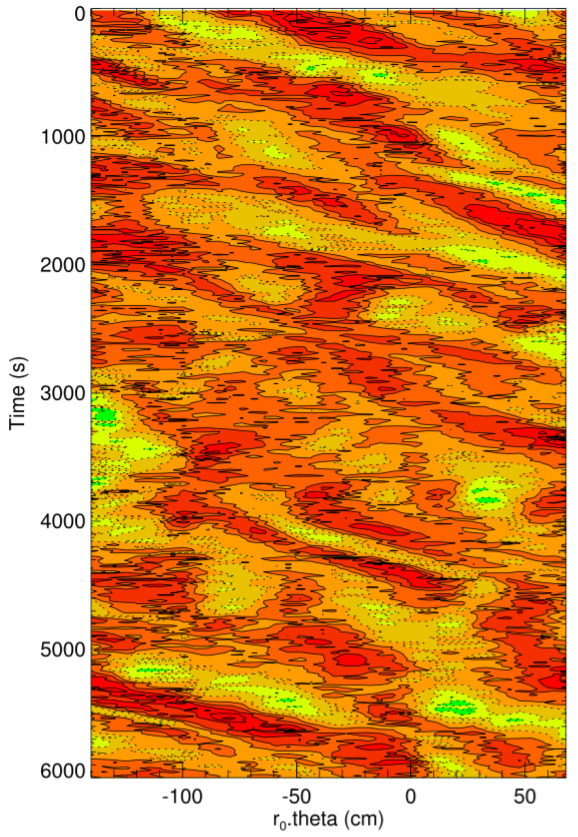Large-scale laboratory experiments
At Oxford I was involved with two experimental campaigns on large-scale rotating tank facilities. Access to these facilities is obtained through a peer-review process, in a similar way to applying for telescope time.
Zonal jet formation on the 13m Coriolis platform at LEGI, Grenoble
Team: Peter Read, Tom Jacoby, Peter Rogberg, Robin Wordsworth, Hiro Yamazaki, Kuniko Yamazaki, Roland Young (AOPP), Joel Sommeria, Henri Didelle, Samuel Viboud (LEGI).
A series of rotating, thermal convection experiments were carried out on the 13m diameter Coriolis platform in Grenoble, France, to investigate the formation and energetics of systems of zonal jets through nonlinear eddy/wave-zonal flow interactions on a topographic β-plane. The β-plane was produced by a combination of a rigid, conically sloping bottom and the rotational deformation of the free upper surface. Convection was driven by a system of electrical heaters laid under the (thermally conducting) sloping bottom and led to the production of intense, convective vortices.
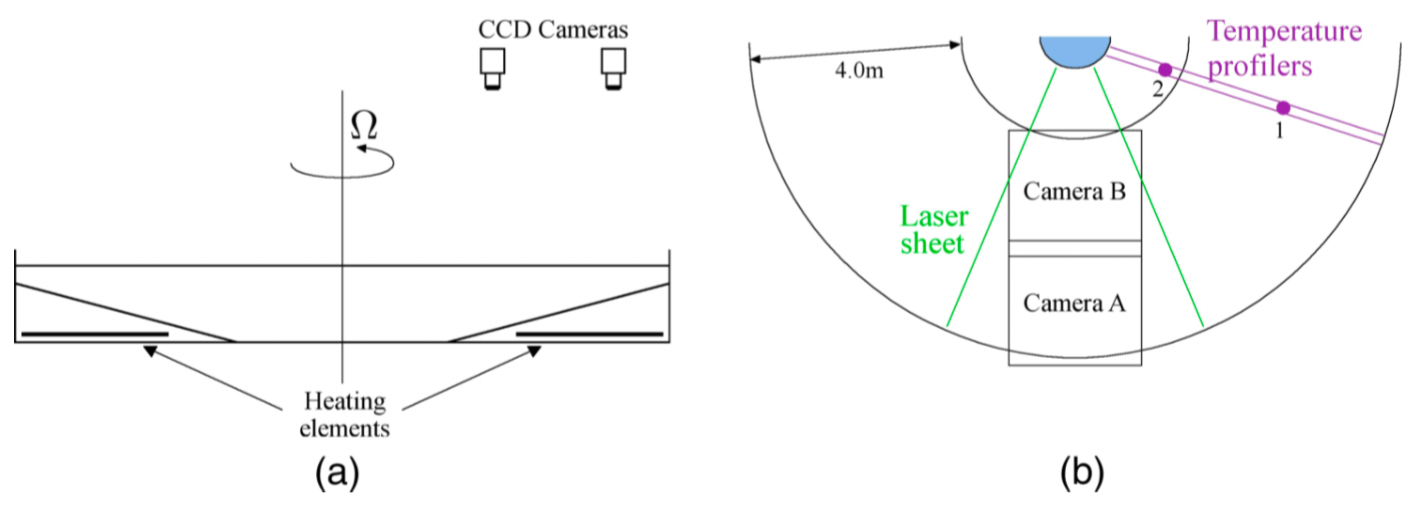
These vortices grew in size as each experiment proceeded and led to the development of weak but clear azimuthal jet-like flows, with a radial scale that varied according to the rotation speed of the platform. Detailed analyses revealed that the kinetic energy-weighted radial wavenumber of the zonal jets scaled quite closely either with the Rhines wavenumber or the anisotropy wavenumber.
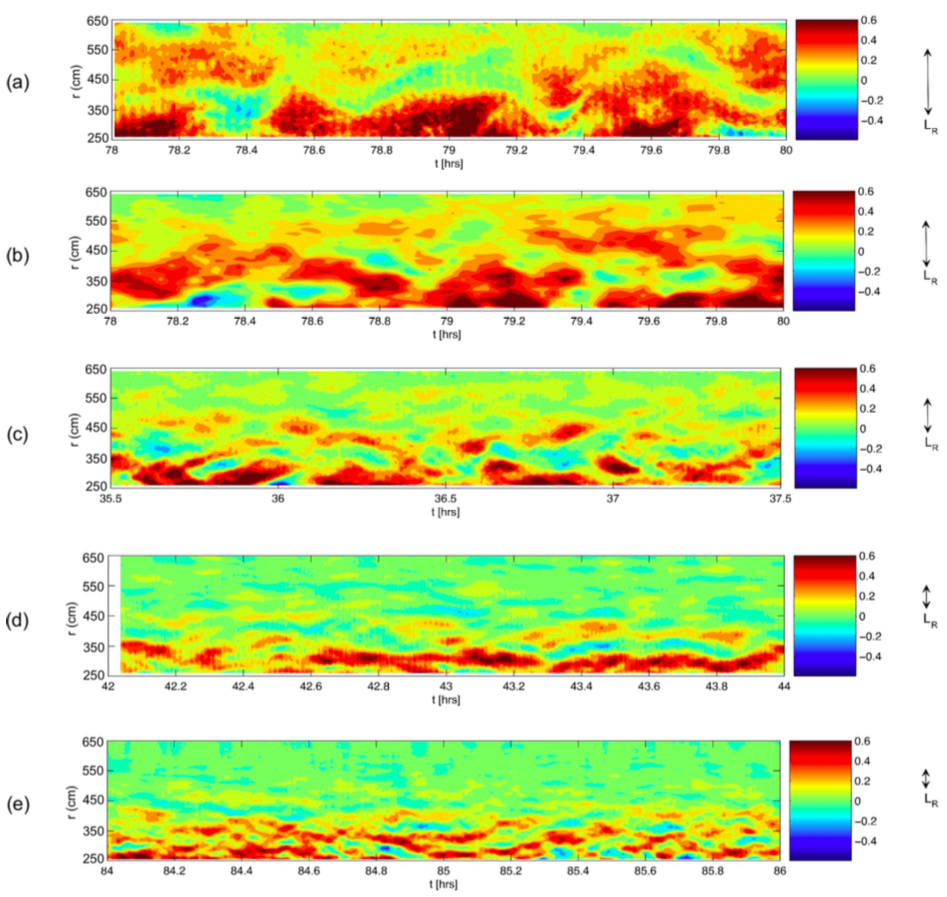
Jets were primarily produced by the direct quasi-linear action of horizontal Reynolds stresses produced by trains of topographic Rossby waves. The nonlinear production rate of zonal kinetic energy was strongly unsteady, however, with fluctuations of order 10-100 times the amplitude of the mean production rate for all cases considered. The time scale of such fluctuations was found to scale consistently with either an inertial time scale or the Ekman spin-down time scale.
Kinetic energy spectra showed some evidence for a k−5/3 inertial subrange in the isotropic component, suggestive of a classical Kolmogorov-Batchelor-Kraichnan upscale energy cascade and a steeper spectrum in the zonal mean flow, though not as steep as the k−5 expected for fully zonostrophic flow. This is consistent with a classification of all of these flows as marginally zonostrophic, as expected for values of the zonostrophy parameter Rβ ≃ 1.6–1.7, though a number of properties related to flow anisotropy were found to vary significantly and systematically within this range.
β-plumes at the 5m TurLab facility at the University of Turin
Team: Peter Read, Roland Young, Hélène Scolan (AOPP), Boris Galperin (USF), Stefania Espa (Rome), Massimiliano Manfrin, Enrico Ferrero, Renato Forza, Federica Ive (Turin).
The objectives of this project were to explore fully developed, forced and dissipative zonostrophic turbulence. This is a sub-regime of geostrophic turbulence that shares many properties in common with idealised 2D turbulence, including upscale kinetic energy transfers by and downscale transfers of enstrophy. It is an important paradigm for understanding the circulation of a range of rapidly rotating fluid systems in geophysics and astrophysics, such as the atmospheres of the gas giant planets and the Earth’s oceans. Achieving such flow regimes in the laboratory is difficult, however, requiring fast rotation speeds in large domains.
The experiments used the 5m diameter rotating tank at the TurLab facility in Turin, Italy. A water depth of about 50cm was used, with a conical bottom boundary to approximate the β-effect on the curved surface of a planet. The tank rotated with periods between 15 and 120s. To generate small-scale turbulence, a "comb" of paddles was moved slowly (in the rotating reference frame) along a radius of the tank over a 130s period. The fluid was filled with tiny tracer particles and illuminated by a horizontal laser sheet. Two cameras were used to take images from above. These were then used to compute velocity fields using the UVMAT/CIV technique (also used in the work on Jupiter's turbulence and in the Coriolis experiments above).
Analysis of the results is currently ongoing.
